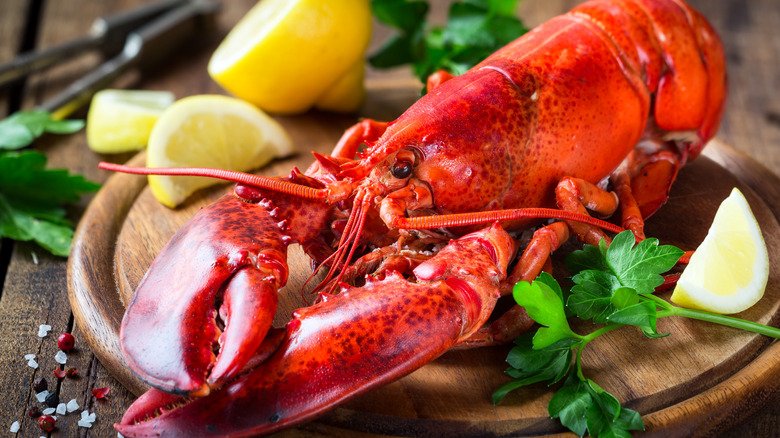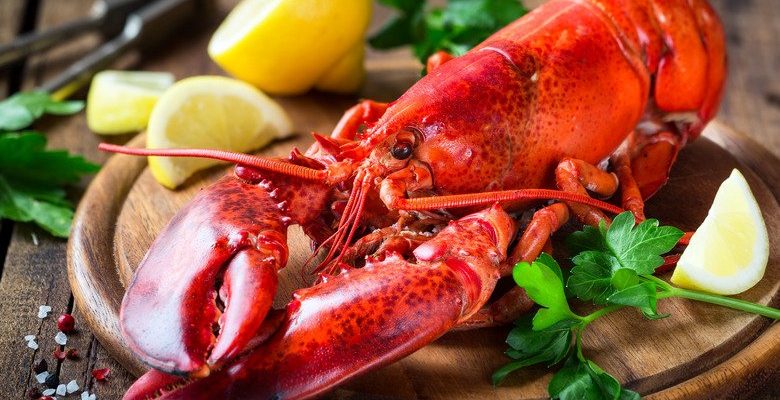
Lobsters have long been associated with everything from luxury to folklore. They’re seen not only as a culinary highlight but also as symbols within various cultures. In this article, we’ll dive deep into the myths and cultural beliefs about the lobster. So, grab a cup of coffee, and let’s explore the world of these intriguing crustaceans together!
The Lobster’s Upside-Down World
One of the most common myths about lobsters is the belief that they can feel pain the same way humans do. Here’s the thing: lobsters do have a nervous system, but it’s quite different from ours. Researchers have debated whether lobsters can truly experience pain or if they merely react to certain stimuli.
Lobsters can’t vocalize discomfort, which adds to the confusion. When you see a lobster flailing in boiling water, it may seem like a sign of distress, but it could just be a reflex. Interestingly, some cultures believe that cooking lobsters alive ensures the freshest taste. This belief, while popular, raises ethical questions about animal treatment and welfare.
In some traditions, lobsters are thought to be symbolic of good fortune. In the coastal communities of Maine, for instance, many celebrate the lobster as a sign of a bountiful catching season. This reflects a deep respect for nature and its resources, reminding us that lobsters are more than just a meal—they’re part of a larger ecosystem.
Lobsters in Folklore and Tradition
Across various cultures, lobsters hold unique places in folklore. In Native American traditions, lobsters are often viewed as a sign of strength and resilience. The Powhatan tribe believed that lobsters, with their hard shells, represented protection and courage. They even used lobster shells in ceremonial practices to symbolize the spirit of their ancestors.
In contrast, some European folklore paints a different picture. In parts of New England, lobsters were viewed with suspicion. They were often seen as bottom-feeders, associated with poverty. It’s hard to believe today, especially since they’re now a luxury item, but once upon a time, consuming lobster was often considered a sign of desperation.
You might be wondering how these beliefs shift over time. As societal norms and perceptions change, the lobster’s role in culture evolves. Today, it’s not uncommon for lobsters to be celebrated in festivals, reinforcing their status as a cherished delicacy.
The Symbolic Nature of Lobsters
Lobsters aren’t just about dinner plates; they also symbolize various things across cultures. In many coastal areas, they signify wealth and abundance. Think about it: when was the last time you saw a lobster at a casual barbecue? Usually, they appear at fancy dinners and celebrations, making them a standing symbol of luxury.
Interestingly, lobsters are also associated with love and fidelity. In the animal kingdom, lobsters are monogamous, often forming lifelong pair bonds. This has inspired romantic notions in various cultures, leading people to gift lobster-themed items as tokens of love.
In Japan, lobsters are considered auspicious, representing long life. They are often featured in celebrations such as weddings or New Year’s feasts, where they symbolize happiness and prosperity. So, the next time you encounter a lobster, remember that it might be more than just dinner; it could be a symbol of hope or good luck.
The Lobster as a Culinary Icon
You can’t talk about lobsters without mentioning their place in the culinary world. From lobster rolls in New England to bouillabaisse in France, lobsters are celebrated for their rich, sweet flavor and versatility in cooking. The lobster’s rise to fame as a delicacy is relatively recent; in the past, it was often seen as food for the poor or a bait for fishing.
The cultural shift surrounding lobsters is quite fascinating. Around the mid-20th century, they became a gourmet item enjoyed by the wealthier classes. Many chefs now experiment with lobster in innovative ways, pairing it with everything from pasta to tacos. This culinary evolution shows how perceptions can change dramatically over time.
However, with this newfound popularity comes the challenge of sustainability. Overfishing and climate change are pressing concerns, prompting many to rethink lobster consumption. Sustainable practices are now a hot topic, pushing us to consider how our choices impact the oceans and marine life.
Lobster Myths in Pop Culture
Lobsters have even crawled their way into pop culture, often depicted in humorous or exaggerated manners. Just think about the classic cartoon character, Sebastian, from “The Little Mermaid.” He’s not just a crab; he embodies the spirit of Caribbean culture and music.
Movies and TV shows often portray lobsters in comical situations, emphasizing their quirky appearance. Who can forget the iconic scene in “Friends” where Ross famously exclaims, “I’m taking a lobster!”? This line captures the essence of lobsters as not just seafood but a metaphor for deep connections and relationships.
These portrayals reinforce the idea that lobsters are more than just creatures of the sea; they’re cultural icons. They evoke feelings, memories, and even laughter, reminding us that our relationships with food are often tied to our personal experiences.
Lobsters are fascinating creatures that hold a unique place in various myths and cultural beliefs. From symbols of abundance and strength to culinary icons, they represent much more than just a meal. As we’ve explored today, the stories we tell about lobsters reflect deeper societal values and changing perspectives.
Whether viewed with reverence or skepticism, lobsters continue to inspire curiosity and wonder. So the next time you enjoy a lobster dish, take a moment to appreciate the rich tapestry of myths and beliefs that accompany it. With each bite, you’re participating in a centuries-old tradition that transcends borders and connects us to nature, culture, and perhaps even a little magic.

